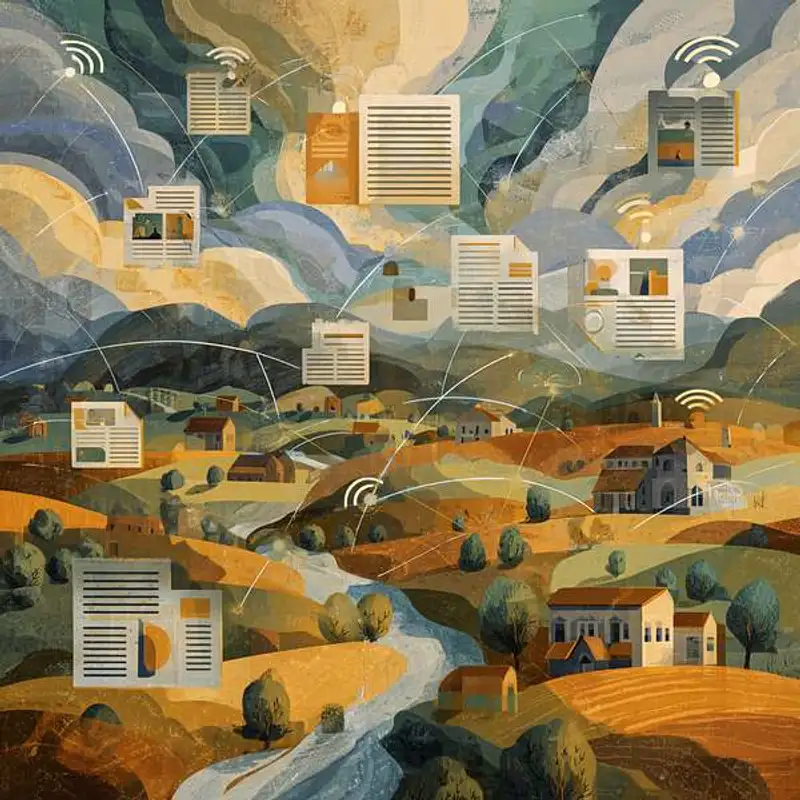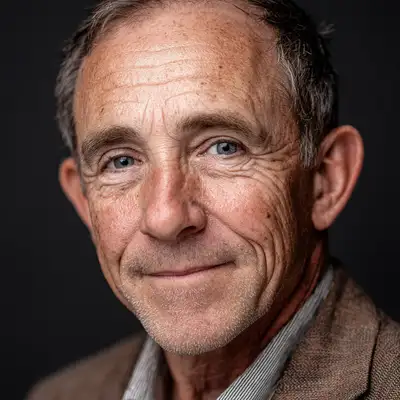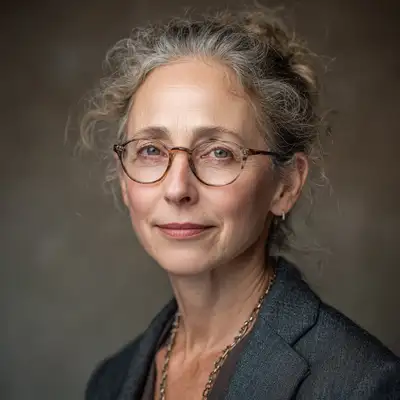
Mapping Central PA's Information Ecosystem
Welcome back to "On Assignment." I'm your host, Gath Townsend, and today we're embarking on a fascinating journey, mapping the ever-changing landscape of how we get our news and information right here in Central Pennsylvania. What is this landscape? Why does it matter? And what does it tell us about our communities?
To help us navigate this terrain, I'm joined by Marianne Keller, an expert deeply involved in understanding and shaping this crucial part of our civic life. Marianne, welcome to "On Assignment."
Thanks for having me, Gath. It's great to be here.
Marianne, we're talking about something called the "Central PA Information Ecosystem Map." That sounds like a bit of a mouthful and super official. Can you tell us, what exactly is this map?
Sure thing. All of this research comes from the Steinman Institute for Civic Engagement and Press Forward. A little about Press Forward, they're a nationwide, nonpartisan philanthropic initiative aimed at building up communities and democracy by supporting local news and information. They're both working really hard to gather data and bring together civic-minded individuals and news organizations. It's still in the early stages here in Central Pennsylvania, but I'll share what came out of the first major session last month. And that takes us back to the Ecosystem Map. Think of it, um, as a really in-depth look at all the different ways people in a 19-county region of Central Pennsylvania get their news and information. It's the first time anyone has really mapped this area in this way. It's not just about listing newspapers and TV stations, though that's part of it. It's also about understanding the newer, less traditional ways people share and find information, like through social media groups. The goal is to create a roadmap for building more informed and involved communities.
So, it's a comprehensive look at everything that provides information?
That's right. The project documented both traditional sources, like newspapers and TV, and informal sources, primarily on social media platforms. They found over 110 traditional sources and more than 200 informal sources just in this region, although that informal number is likely much higher and constantly changing. The map also includes feedback directly from community members about their needs and how they get information.
Wow, that's a lot of sources. Why is it so important to create a map like this now?
Well, the way people get information has changed dramatically over the past couple of decades. The old business model for local news, which relied heavily on local advertising, is broken because those ad dollars have largely moved online to big tech companies. This has led to many newspapers shrinking, being sold, or even closing down.
I can recall The Elizabethtown Advocate closing shop not too long ago, and there have to be others, right?
They're not alone. At the same time, more and more people are turning to social media platforms like Facebook to find out what's happening in their community. In fact, recent research in this region shows that social media is the primary source for the general public, used twice as much as local newspapers or magazines. TV news still plays a critical role, too.
So, people are getting information differently, and traditional sources are struggling. How does that impact community life?
That's where the "ecosystem" idea comes in. There's substantial research that shows when local news declines, we risk losing not just facts, but a sense of community identity and shared understanding. And the data from the Steinman Institute and Press Forward shows that fewer than 4 in 10 people in Central PA feel at least "somewhat" connected to their local community, and only 1 in 9 feels "completely connected".
The belief behind this map and related work is that reliable local news and information are vital for helping people feel connected and able to participate in civic life. But the old ways aren't reaching everyone, so new approaches are needed.
It makes sense that knowing what's happening locally helps you feel connected. You mentioned the map includes feedback from the community. What did people say about how they get information and what they need?
That was a crucial part of the process. The Steinman Institute for Civic Engagement and Press Forward conducted lots of interviews, surveys, and listening sessions, really trying to hear from different groups, including those less connected to traditional news.
They found that while some people still prefer traditional sources and value things like fact-checking, many others prioritize immediacy and ease of use, often turning to social media. Interestingly, regardless of where they got information, many people were interested in content that helps them take action and connect with their community.
There's also a sense that the current media landscape can reinforce echo chambers and make it hard to engage across differences. People expressed a desire for more diverse voices and stories that reflect the whole community.
So it's not just about what the news is, but who is telling it and how it makes people feel?
Quite. They've found the need for trust to be relational, not just informational. Building trust happens in informal spaces, face-to-face. It also requires transparency – helping people understand how news decisions are made. And people want to see themselves reflected in the coverage.
They also found that focusing just on "local news" sometimes didn't resonate, especially with those less engaged. When they started asking questions like "How do you find out what's going on in your community?" or "What do you want to see changed and what information would help?", they got more insightful answers. This broader approach helps understand the information needs before it becomes formal "news".
That's a powerful idea – going "upstream from news" to understand how people live and connect. Interesting. So what are some of the key challenges or opportunities the map and feedback highlighted for this ecosystem?
Several themes emerged. One is the need to rebuild trust. As we discussed, trust needs to be built through relationships and curiosity, not just information.
Another is centering solutions. People are tired of just hearing bad news, which can lead to burnout and disconnection. The idea is to highlight stories of how the community is working well and solving problems, which can build civic connection and trust.
And third is equipping action. Even with lots of information available, it can be hard for people to figure out how to get involved in their community. There's a desire for tools and information that make civic participation easier and more meaningful. This relates to the idea of fostering "civic joy," which is the sense of agency and satisfaction from engaging with others to make change.
So the map isn't just a list; it's pointing towards ways the information ecosystem needs to evolve to serve the community better?
Yes, spot on. It suggests that the future involves expanding the definition of news and information, supporting diverse voices, using new tools and platforms, and importantly, collaborating. Instead of competition, the idea of collaborative infrastructure came up repeatedly – sharing tools, resources, and even storytelling efforts to amplify impact and avoid duplication. Youth are also seen as critical to the future, needing agency and media literacy skills.
The report's authors emphasize that this work can't be top-down. It needs to involve the community in co-creating the future of news and information.
It sounds like a really valuable starting point. Where can people go to learn more or even get involved in this effort?
The report is presented as a starting point and an invitation. The Steinman Institute and Press Forward are already planning more events in the area. Additionally, people can help build the map further by submitting sources that aren't included yet. They can also pitch solutions or sign up to join pilot projects that come out of these ideas. And, importantly, they can support their local information sources that are already doing this vital work.
The goal is to move towards an ecosystem that is participatory, reflects diverse voices, and is powered by community trust. It's about imagining what local news and information can become, not just looking back at what it used to be.
"Co-creators of a healthier civic culture" – that's a powerful way to put it. Marianne, thank you so much for breaking down this fascinating project.
My pleasure, Gath. It's a really important conversation for our communities.
And thank you for joining us on "On Assignment." We'll be back next time with another deep dive into the Steinman Institute's findings and examine the seemingly Broken Business Model for news and the ongoing Search for Sustainable Local News.
From questions comes clarity, so stay curious. I'm Gath Townsend. See you next time.
Creators and Guests

